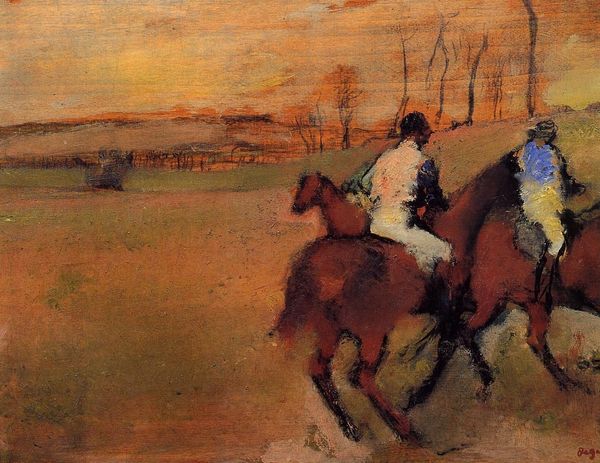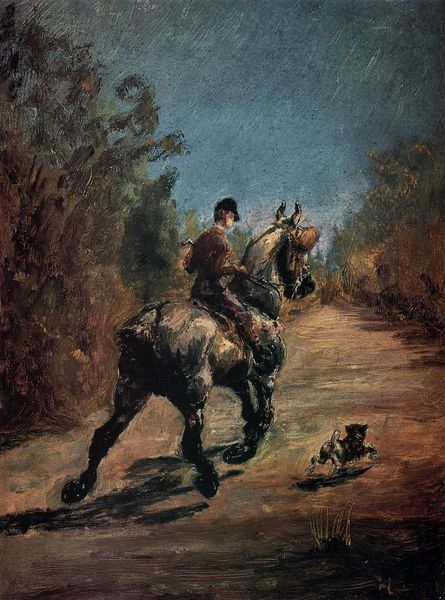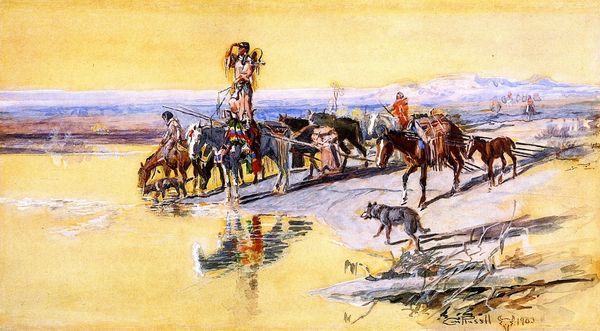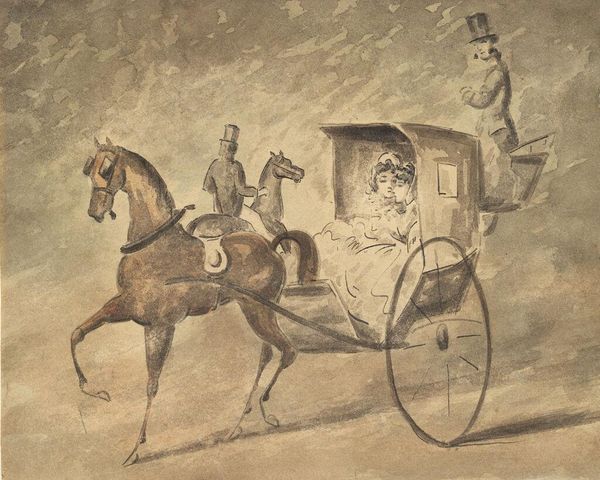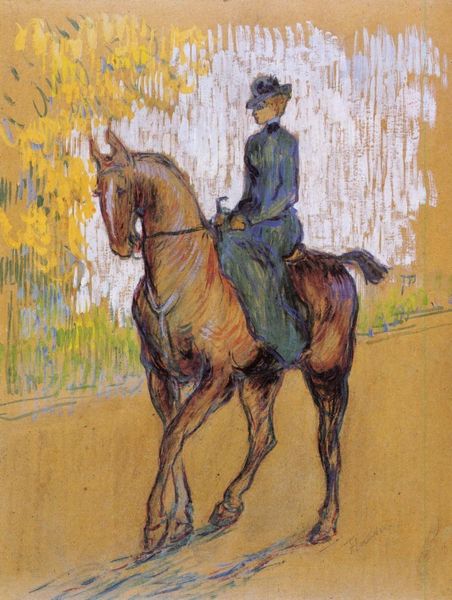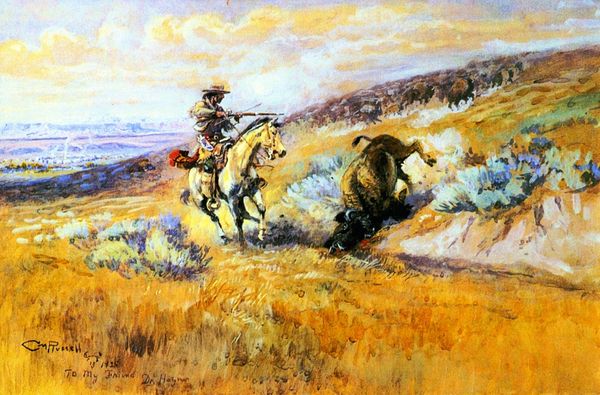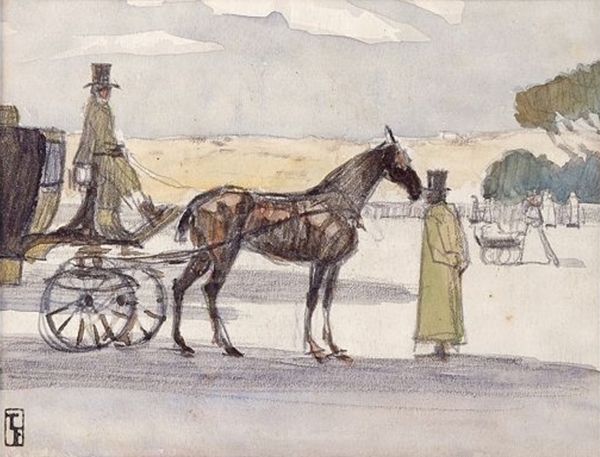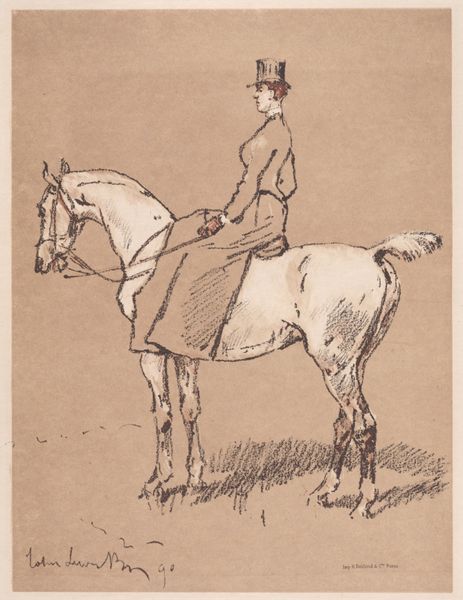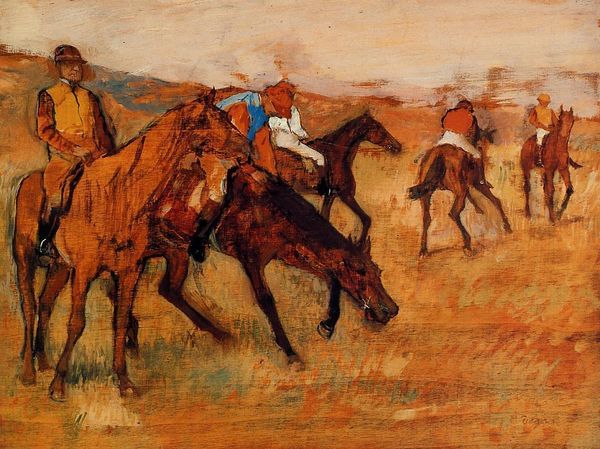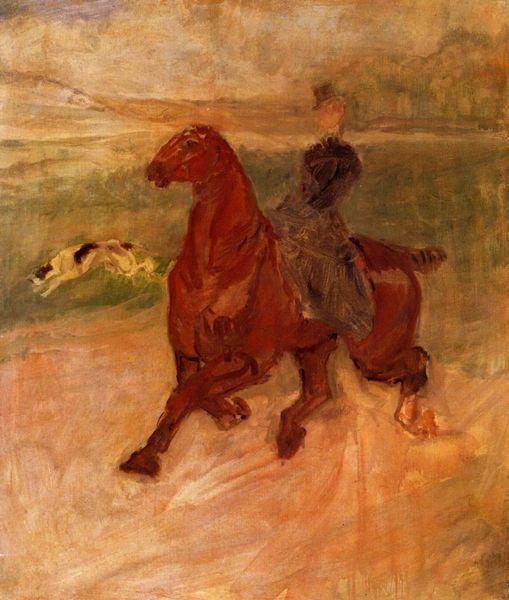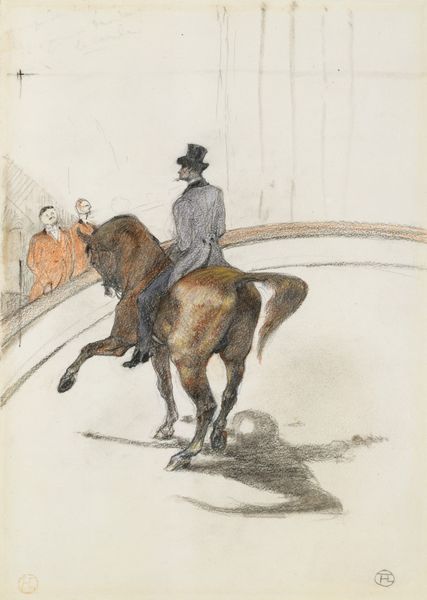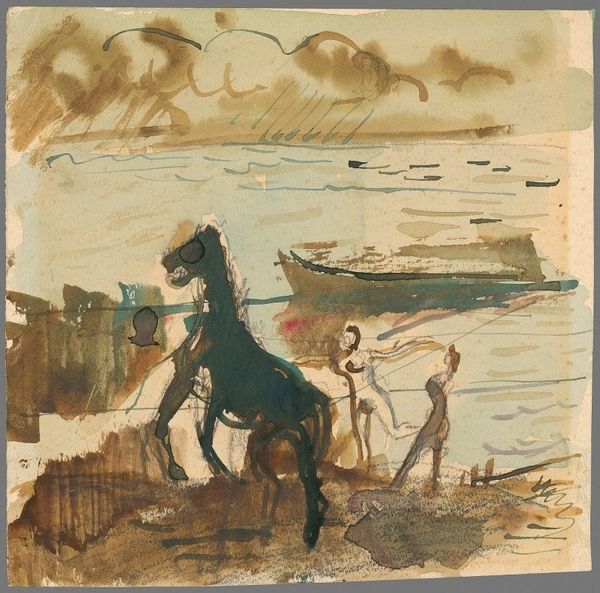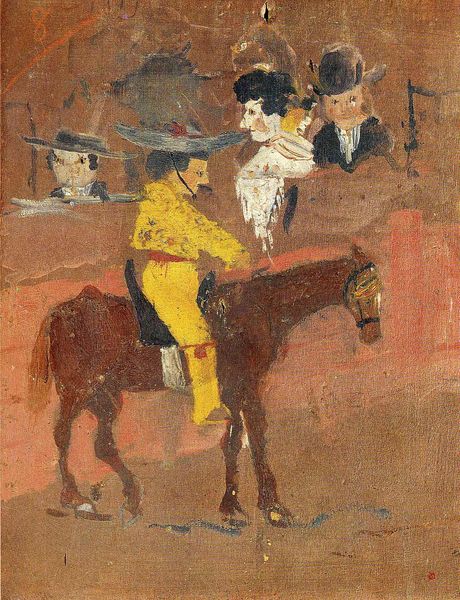
Copyright: Public domain
Curator: Henri de Toulouse-Lautrec’s "Horsewoman", created around 1899, offers a glimpse into equestrian life during the Post-Impressionist period. It’s rendered in coloured pencil, giving it a uniquely delicate yet expressive quality. Editor: The first thing that strikes me is how light and fleeting it feels. Almost like a memory fading at the edges. It has a hazy quality, softened by the humble materiality of coloured pencils. Curator: Precisely! Toulouse-Lautrec often employed less traditional mediums like pastel and coloured pencil, drawn perhaps from his background working with posters and lithographs. What do you notice about his choice of composition? Editor: Well, the elongated format draws my eye vertically, from that quizzical dog right up to the rider's distant gaze. It's a study in implied labor and leisure. The rough mark making, a certain raw quality to the application, seems so different from the highly-finished equestrian portraits of the era, often made for the very rich. Curator: And there's a wonderfully evocative atmosphere, a certain coolness and space around the figures, punctuated with pastel flourishes that create the sky and suggestion of landscape. One senses Toulouse-Lautrec wasn’t necessarily concerned with depicting aristocratic glamour here. It feels more like he captured a fleeting moment observed while visiting friends in Normandy. Editor: Absolutely. This seems more a snapshot of daily practice than a celebration of aristocratic power. Think of all the invisible labour here: breeding, training, mucking stalls. It makes you wonder about all the materials that make this lifestyle possible. Curator: It makes me consider how many of his depictions of dancers, circus performers, and jockeys were ways to grapple with societal spectacle through acute, sensitive observation, doesn’t it? To extract, almost alchemically, a moment's essence through deftness of line. Editor: A deftness enabled, of course, by the increasingly accessible pigments and production technologies of the late 19th Century. I appreciate how a "simple" coloured pencil sketch can unveil so many layers about the systems that enable not just art, but entire ways of living and consuming. Curator: Thinking about Toulouse-Lautrec's place, what strikes me most now is a feeling of compassion here – seeing him find a poignant beauty in unassuming corners of the everyday. Editor: And that is such a wonderful perspective on art - the simple pleasure of looking with thoughtful eyes. Thank you.
Comments
No comments
Be the first to comment and join the conversation on the ultimate creative platform.
